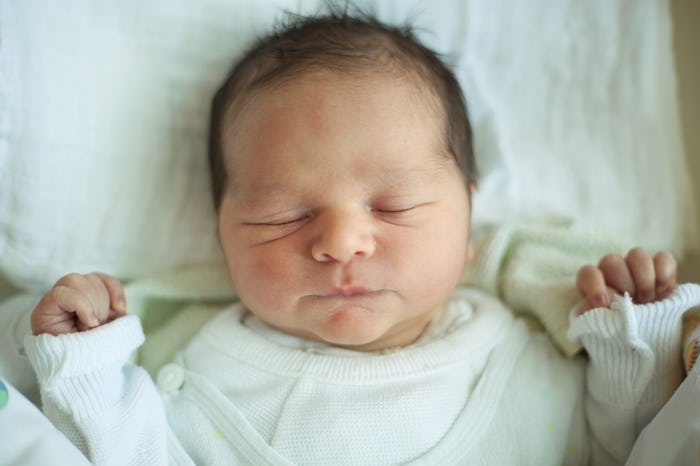Life

7 Common Sleep Dangers For Babies Other Than SIDS
It feels much more manageable to keep tabs on your baby and watch over their safety in the daytime. It's those precious few hours you spend snoozing that can be intimidating. Sudden Infant Death Syndrome, or SIDS, is a concern at that parents want to be proactive in preventing, and all the research on this subject has yielded a set of guidelines to reduce the risk of SIDS that all parents can use. But there are common sleep dangers for babies other than SIDS that parents should be knowledgable about as well.
The nighttime hours can be some of the most vulnerable and anxiety-inducing times for parents, but securing a safe sleep environment for your baby is possible with some intentional preparation. The main goal is to provide a place of rest for your child that is free of any hazards or potential dangers. Setting up a secure place for your baby to take naps and sleep at night is a task that should be planned for ahead of time — not after the baby is already sleeping. Ideally, parents can prepare a safe sleep space for their baby before she is born. With these seven common sleep dangers in mind, you can ensure that you've done everything in your power to keep your baby out of harm's way when she's getting some Zs.
1Soft Objects
A baby's sleep environment should be free of soft loose objects to provide safety from risk of suffocation and strangulation, according to Healthy Children, a website from the American Academy of Pediatrics. Items such as bumper pads, pillows, toys, and blankets are considered hazards in a crib or bassinet.
2Bed-Sharing
As the March of Dimes pointed out, bringing a baby into the adult bed to sleep can lead to tragic results. Risks for the baby include: becoming trapped by the bed frame, falling off the bed, and having another person roll on top of them. Room sharing is recommended, as long as the baby has her own bassinet or crib to sleep in.
3Using Furniture As A Bed
Even the comfiest couch can become a dangerous trap, which is why sofas are no place for a baby to snooze. Couch sleeping increases the risk of entrapment and suffocation for little ones, according to Parents magazine. All those fluffy cushions are not safe for a sleeping baby.
4Soft Surfaces
Just like soft, loose objects in a crib, putting baby to rest on soft surfaces is never recommended. According to the website for the U.S. National Library of Medicine, the safest place for a baby to be put to sleep is a firm surface. This means waterbeds, cushions, air mattresses, and pillows are off limits for slumbering bambinos.
5Tummy Sleeping
For the last 20 years, back sleeping has been the most recommended sleeping position for babies. As Healthy Children pointed out, tummy sleeping is considered dangerous for babies because she receives less oxygen from rebreathing air from the small pocket created around the nose, due to her face being so close to the bedding.
6Sleeping In Other Devices
Even if your little one dozes off in a stroller, car seat, swing, or infant carrier, they should not be left there to sleep, as Baby Center pointed out. These devices put the baby's head in a position where rolling forward is highly possible, and the chance of suffocation increases. Transfer babies into their crib if they fall asleep somewhere else to help keep them as safe as possible.
7A Sleepy Mama
Babies aren't the only ones who may nod off during or shortly after a feeding. According to The Washington Post, parents sometimes fall asleep while feeding their baby, which can be hazardous for the baby. If you're worried about slipping into dreamland while feeding your little one, try to feed in safe sleeping environments, such as an adult bed that has been cleared of all soft and loose objects.